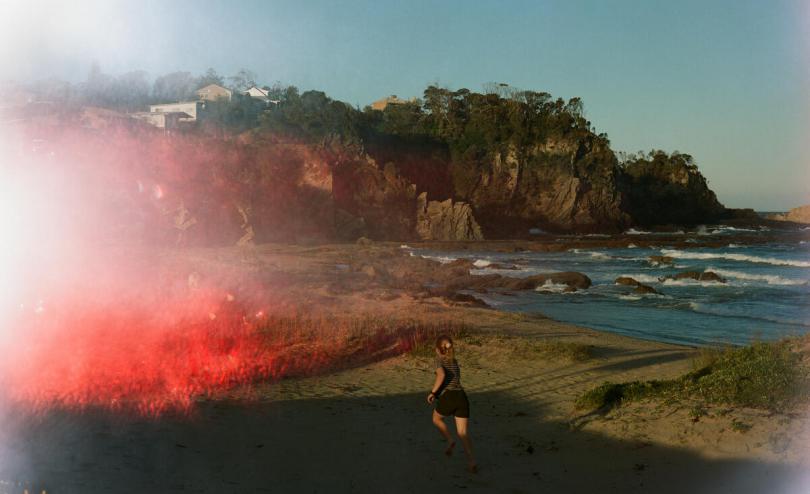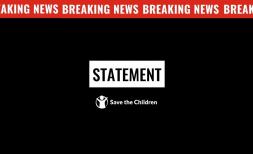PHOTO SERIES: Surviving the Climate Crisis

As the COP26 summit begins, Save the Children has released a new photo series documenting the stories of children and their families living on the frontline of the climate crisis captured by world-renowned photographers in Australia, Cambodia, and Pakistan.
Matthew Abbott travelled to coastal New South Wales to meet families whose lives have been changed forever by intense bushfires in Australia. Lim Sokchanlina visited Tonle Sap Lake (the largest freshwater lake in South East Asia) where fish stocks and lowland forests have been devastated by the climate crisis and Nad E Ali spent time in Lahore, one of the most polluted cities on earth, where children daily battle the effects of suffocating air pollution.
These creative and experimental photos have each been exposed to the causes and consequences of climate change, reflecting the impact of changing weather, extreme heat and pollution impacting children’s lives and their futures.
Working with chemist Dr Marcus Dymond of the UK’s University of Brighton, Lim Sokchanlina's pictures from Cambodia were treated with natural materials and climate change-causing chemicals to represent the changing lake. Nad E Ali’s images from Pakistan were exposed to pollutants commonly found in Lahore. Matthew Abbotts images, from Australia, were exposed to sunlight representing the extreme heat and destruction of the bushfires.
Recent research by Save the Children shows that children born over the past year will on average face seven times more scorching heatwaves and almost three times more crop failures than their grandparents[1].
It also reveals that under the same conditions, newborns across the globe will on average live through 2.6 times more droughts, almost three times as many crop failures and river floods, and twice the number of wildfires as people born 60 years ago.[2]
In Cambodia, 15-year-old Chenla lives on a small houseboat in Tonle Sap lake with her parents and three siblings. Increased droughts, flooding, pollution and illegal fishing mean fish stocks have rapidly depleted, pushing thousands of families who rely on the lake for their livelihoods into poverty.
Her father Sambath, who has lived on the lake since 1979, has noticed lots of changes in the environment. He believes that the sun is getting hotter, the rain patterns are changing, and illegal fishing have all impacted the numbers of fish.
He said: “People who live on the river can’t make a living anymore. There’s only death and starvation. Because we lost all the fish, the natural resources, including trees, and forests that have been cut down and we have nothing left.”
When asked about her life, Chenla said: “It’s very difficult... I have lived here for five or six years now and we don’t have a house to live in.
We only have a small boat for all of my family.”
In Australia, 11-year-old Harry lives with his family in coastal New South Wales. In November 2019, they were driven from their home by some of the worst bushfires in living memory now known as the “Black Summer” of fires.
Bushfires in Australia have been made 30%[4] more likely due to the impact of climate change, whilst children across the world now face twice the risk of wildfires in their lifetime as their parents[3].
Harry said: “I remember seeing metal fly up through the smoke. We saw burnt leaves just falling on the ground. I started crying because everyone was trying to call 000.”
The family was sheltered from the blaze with hundreds of others on a beach. They then drove directly through a bushfire before finding sanctuary in an evacuation centre.
Harry’s mother, Margie said: “Hopefully, we'll do more and look after the planet, like to reduce our waste and have a better impact on the environment. I think I have a newfound respect for Mother Nature.”
In Pakistan, the city of Lahore is one of the most polluted in the world. Rubbish is routinely burned on the streets, releasing toxic gases. Air pollution levels have reached 12 times over the WHO guideline levels[5] and this has a devastating impact on children’s health, accounting for one in 10 deaths of children under five globally[6].
“There is a lot of pollution. People burn trash in the street.” said 12-year-old Zahra who lives in Lahore. “It affects my family because pollution can make us sick in our homes.”
She is part of an “eco club” in the city, where a group of children are fighting back and planting trees in the community to combat pollution. Zahra said: “I try to spread the word. It’s important for our future. We plant trees, we water them, protect them.”
Inger Ashing, CEO of Save the Children International said:
“These stories show the devastating impact the climate crisis is already having on the lives of children across the world. Each one is a powerful reminder that children are at the heart of this crisis, being robbed of their childhood today and their futures tomorrow.
“Our climate is becoming increasingly unpredictable, with deadly consequences. In recent years we've seen a surge in floods, droughts, heatwaves and forest fires.
“Without action, we risk handing our children a deadlier and more uncertain world. But we know change is possible. We’re calling on the Insert your government here, ahead of COP26, to take action in the best interests of children now before it’s too late.”
[1] https://www.ox.ac.uk/news/2020-03-12-australia-s-bushfires-made-30-more-likely-climate-change
[2] https://www.iqair.com/pakistan/punjab/lahore
IMAGES: https://www.contenthubsavethechildren.org/Package/2O4C2SCS2VKT
For further enquiries please contact:
- Simon Edmunds from SCUK on S.Edmunds@savethechildren.org.uk
- Our media out of hours (BST) contact is media@savethechildren.org.uk / +44(0)7831 650409




